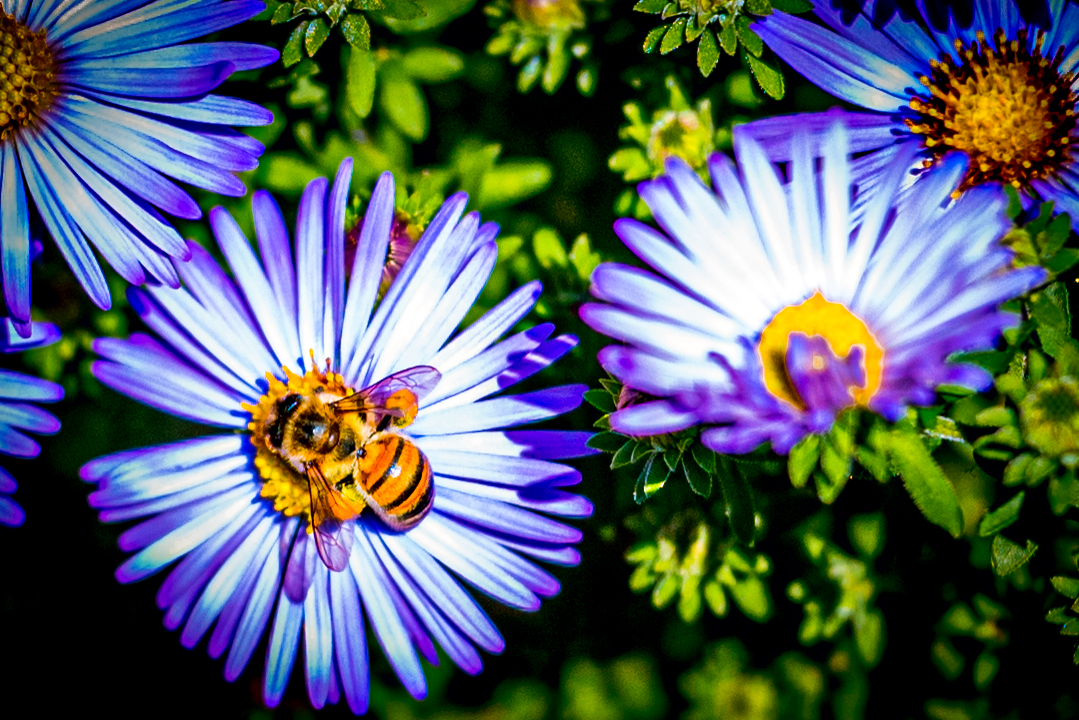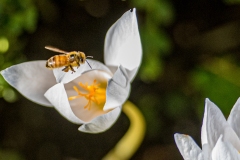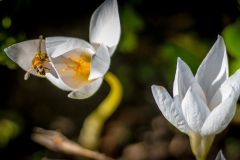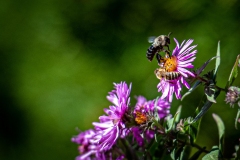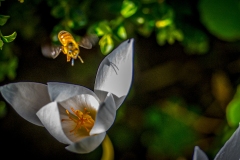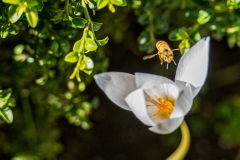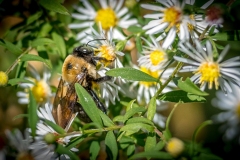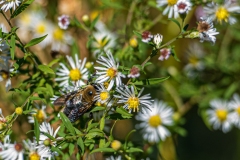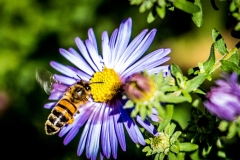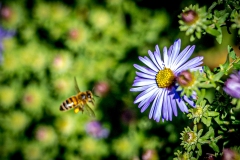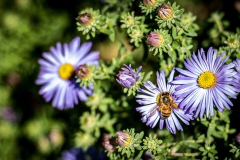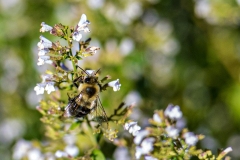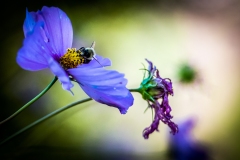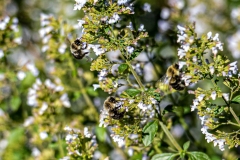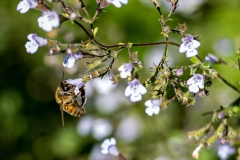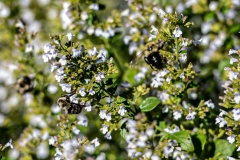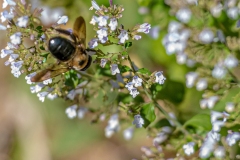The Honey Bees hidtory
Honey bees have a long and fascinating history that dates back millions of years. Fossil evidence shows that honey bees have been around for at least 30 million years, and they are thought to have originated in what is now Europe, Africa, and Asia.
Honey bees have been kept and used by humans for thousands of years. The ancient Egyptians were known to keep bees and use honey as a sweetener, and honey was also used in ancient Greece and Rome. Honey bees were brought to North America by European colonists in the 1600s, and beekeeping quickly became an important industry in the United States.
Today, honey bees are one of the most important insects in the world, as they are responsible for pollinating many of the crops that we rely on for food. Honey bees are also important producers of honey, beeswax, and other valuable products.
In recent years, honey bee populations have been declining due to a number of factors, including habitat loss, pesticide use, and disease. This has raised concerns about the future of our food supply, as well as the impact on the broader ecosystem. As a result, there has been a renewed focus on honey bee conservation and research to better understand and address these issues.
The Honey Bees system
Honey bees are social insects that live in highly organized colonies or hives. The hive is made up of three types of bees: the queen, the worker bees, and the drones.
The queen bee is the largest bee in the hive, and her main role is to lay eggs. She can lay up to 2,000 eggs per day during the height of the breeding season. The worker bees are all female and make up the majority of the hive. They are responsible for collecting nectar and pollen, caring for the young, and maintaining the hive. The drones are male bees that are only present during the breeding season. Their main function is to mate with the queen.
The bees communicate with each other through a complex system of chemical and physical signals. They use pheromones to signal the presence of the queen, to mark food sources, and to communicate with each other about the status of the hive.
Honey bees also have a unique system of navigation. They use the sun as a reference point to locate food sources, and they can communicate the location of these sources to other bees in the hive through a dance known as the waggle dance.
The hive is made up of hexagonal cells that are used to store honey, pollen, and the eggs and larvae of the bees. The bees work together to build the comb, which is made of wax that they secrete from glands in their bodies.
Overall, the honey bee system is a highly organized and complex social structure that allows the bees to work together efficiently to maintain the hive and produce honey.
Honey bees Species
There are seven recognized species of honey bees, although the most commonly domesticated and known species is the Western honey bee (Apis mellifera). The seven recognized species are:
- Western honey bee (Apis mellifera)
- Eastern honey bee (Apis cerana)
- Giant honey bee (Apis dorsata)
- Himalayan honey bee (Apis laboriosa)
- Red dwarf honey bee (Apis florea)
- Black dwarf honey bee (Apis andreniformis)
- Koschevnikov’s bee (Apis koschevnikovi)
The Western honey bee is the most widely distributed and domesticated species of honey bee and is commonly used for honey production and crop pollination. The Eastern honey bee is found in Southeast Asia and is also used for honey production. The Giant honey bee is found in South Asia and is known for its large colonies and aggressive defense behavior. The Himalayan honey bee is found in the Himalayan region and is known for its production of a type of honey called mad honey, which has psychoactive properties. The Red and Black dwarf honey bees are found in Southeast Asia and are known for their small size and ability to build small nests in trees. Koschevnikov’s bee is found in Indonesia and is the smallest species of honey bee.
Honeybees Life cycle
The life cycle of a honey bee can be divided into three stages: the larval stage, the pupal stage, and the adult stage.
- Larval stage: The life cycle of a honey bee begins when the queen lays an egg in a cell of the comb. The egg hatches into a larva that is fed by the worker bees with a mixture of pollen and honey called “royal jelly”. The larva grows rapidly and molts its skin several times during this stage.
- Pupal stage: After about six days, the larva spins a cocoon around itself and begins the pupal stage. During this stage, the larva undergoes a metamorphosis, changing from a grub-like larva into an adult bee. The pupal stage lasts for about two weeks.
- Adult stage: After emerging from the cocoon, the bee chews its way out of the cell and begins its adult life. The first adult bees to emerge from the comb are worker bees, followed by drones and then the queen. The lifespan of a worker bee is typically around six weeks, while drones live for several months, and the queen can live for several years.
During the adult stage, worker bees perform various tasks, including collecting nectar and pollen, caring for the young, and building and maintaining the hive. Drones are solely responsible for mating with the queen. The queen bee’s primary function is to lay eggs and maintain the hive’s population.
Overall, the honey bee life cycle is highly organized and coordinated, with each bee playing an important role in the survival and success of the hive.
The honey bee is a highly beneficial insect commonly found in gardens around the world. They play an important role in pollinating plants, which helps to ensure that flowers and crops produce seeds, fruit, and vegetables.
Honey bees are social insects and live in colonies that can number in the thousands. They work together to build and maintain their hive, and each bee has a specific role to play in the colony. The queen bee is responsible for laying eggs, while the worker bees gather nectar and pollen, make honey, and care for the young.
When honey bees visit flowers, they collect nectar and pollen, which they bring back to the hive. During this process, they inadvertently transfer pollen from one flower to another, allowing plants to reproduce. This pollination is essential for many types of crops, including fruits, vegetables, and nuts.
In addition to their role in pollination, honey bees also produce honey, which is a sweet and nutritious food that has been enjoyed by humans for thousands of years. The process of making honey involves the bees collecting nectar from flowers and then regurgitating and storing it in the hive, where it is processed and transformed into honey.
Overall, honey bees are an important part of many gardens and ecosystems around the world, and their presence can help to promote plant growth and biodiversity.
Honey bees are a type of bee that are known for their role in producing honey, which is a natural sweetener and has been used by humans for thousands of years. Honey bees are also important for pollinating plants, which is essential for agriculture and the production of many foods we eat.
Honey bees live in large colonies, which consist of a queen bee, worker bees, and drones. The queen bee is responsible for laying eggs and producing new bees, while the worker bees are responsible for collecting nectar and pollen, caring for the young bees, and maintaining the hive. Drones are male bees that mate with the queen and do not have stingers.
Honey bees are important for the environment and the economy, but they are facing a number of challenges, including habitat loss, pesticide use, and diseases. Beekeepers play an important role in maintaining healthy honey bee colonies and ensuring that they can continue to provide the valuable services they offer.

